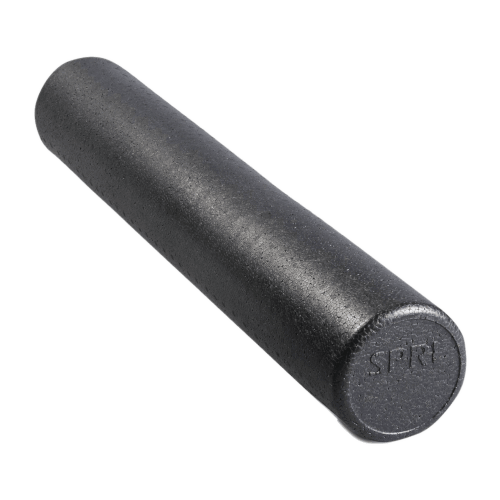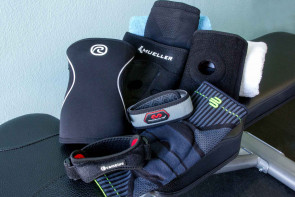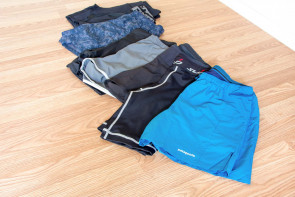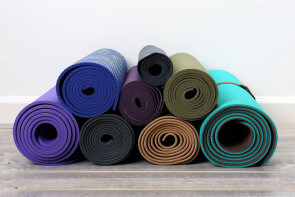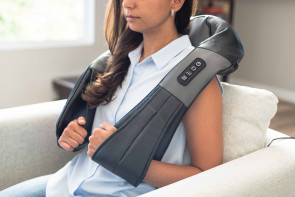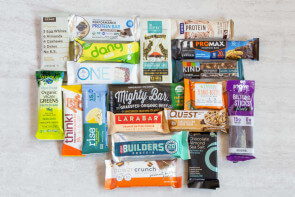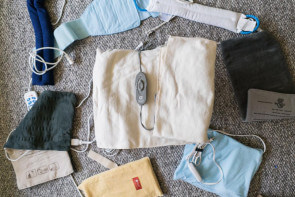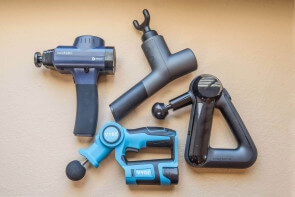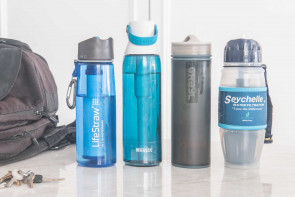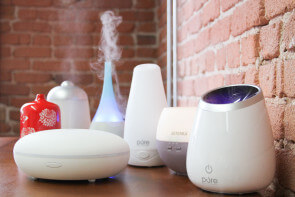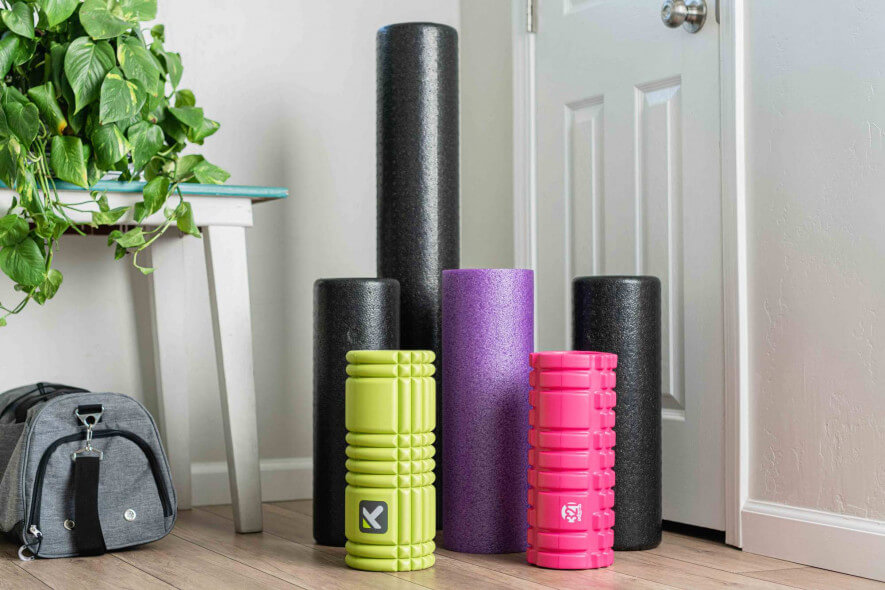
The Best Foam Rollers
There are two types of people: those who love foam rolling and those who think it’s torture. Luckily for those who love it, it turns out that foam rolling is great for your body. Even better, we found the overall best foam roller for you to take home with you is the SPRI – High Density Roller. Made from molded polypropylene, this foam roller is firm, but not too tough on your muscles. The design is simple, it is easily stored and will last for many years. For a gridded foam roller, we also recommend the TriggerPoint – GRID Foam Roller.
There are two types of people: those who love foam rolling and those who think it’s torture. Luckily for those who love it, it turns out that foam rolling is great for your body. Even better, we found the overall best foam roller for you to take home with you is the SPRI – High Density Roller. Made from molded polypropylene, this foam roller is firm, but not too tough on your muscles. The design is simple, it is easily stored and will last for many years. For a gridded foam roller, we also recommend the TriggerPoint – GRID Foam Roller.
Table of contents
- How we selected finalists to test
- Compare the best foam rollers
- Who needs a foam roller?
- Important features to consider
- How we tested
- Best overall: SPRI – High Density Roller
- Runner-up: TriggerPoint – GRID
- Other finalists we tested
- The bottom line
How we selected finalists to test
Foam rolling is a method of self-myofascial release; in other words, self-massage. Stretching, massage, and applying pressure with a foam roller all aid in improving flexibility, reducing soreness and quickening recovery.
There are several other methods of self-massage that focus on all or particular body parts. We’ve reviewed a wide range of self-massage tools, such as leg massagers, foot massagers, neck and shoulder massagers, back massagers, handheld massagers and percussive massage guns. Any of these will help relieve chronic muscle pain.
During our research into foam rollers, we found that most people wondered if there was a major difference between a basic budget foam roller and a fancy triple-digit-priced gridded roller. Spoiler alert; there’s not as big of a difference as you might think. Affordable foam rollers are just as functional as the more expensive options.
To gain some expert insight, we also consulted Ian Elwood, Certified Athletic Trainer and owner of MissionMVMT.com. According to Ian, there are many foam rollers on the market that are basically the same thing. The main difference, he says, is the material. “At some point, companies found that different densities of foam could offer a different experience. The soft foam was good when it was new, it had some give which added comfort, but the rollers would tend to flatten out over time, making them harder to use and thus, less effective. Eventually, companies like Trigger Point Therapy began creating foam rollers that are essentially a plastic PVC pipe wrapped in relatively soft foam. This type of roller is ubiquitous across the market now.”
With this insight, we decided to test with cylindrical foam rollers, which can be rolled on all parts of the body. We then perused Amazon for foam rollers that had a rating of at least 4 stars, a few hundred reviews, and cost no more than $40.
Ultimately, we ended up with these six foam rollers as our top picks.
Compare the best foam rollers
| Roller | Price | Length (Inches) | Material | Firmness 1–5 |
|---|---|---|---|---|
| 1. SPRI - High Density Roller | $$ | 18 | Expanded Polypropylene | 4 |
| 2. TriggerPoint - GRID | $$$$ | 13 | Ethylene Vinyl Acetate | 3 |
| 3. AmazonBasics - High Density Roller | $$ | 36 | Expanded Polypropylene (?) | 4 |
| 4. j/fit - High Density Roller | $$ | 18 | Expanded Polypropylene | 4 |
| 5. Yes4All - PE Foam Roller | $ | 18 | Polyethelene | 2 |
| 6. 321 STRONG - Medium Density Massager | $$$ | 13 | Ethylene Vinyl Acetate | 3 |
Who needs a foam roller?
Athletes: Everyone feels stiffness from time to time, whether that’s because they work at a desk for long periods or because they’re like Rhys Jenkins, ultra runner and race director of Pegasus Ultra Running. Jenkins told us that through hundreds of miles run in harsh locations, like Iceland and Death Valley, his foam rollers “act as a reset button for the legs. They move on any lactic acid and help neutralize any golf-ball-sized knots.”
People who work at desks: Of course, even those of us who are not high-performance athletes can benefit from foam rolling. We spoke with Vivian Eisenstadt, CEO of Vivie Therapy, who explains, “In this day and age of postural epidemics, I find the simple exercises that can be done on the foam roll essential in keeping the body pain free, keeping the muscles stretched out and released to balance out the damage we do from hours at the computer, car and couch.”
Our experts told us that the proper way to use a foam roller is to roll it around until you find a tight spot, stop rolling, and stay on the spot for at least 30 seconds, and up to two minutes. Move on to another spot and then repeat until the area feels better. Leon Turetsky of Back Intelligence emphasizes that “the key is to not roll up and down. You need to hold it in one spot for the knot to relax.”
Also, as tempting as it may be, avoid using a roller on your lower back as that can actually cause injury.
Important features to consider
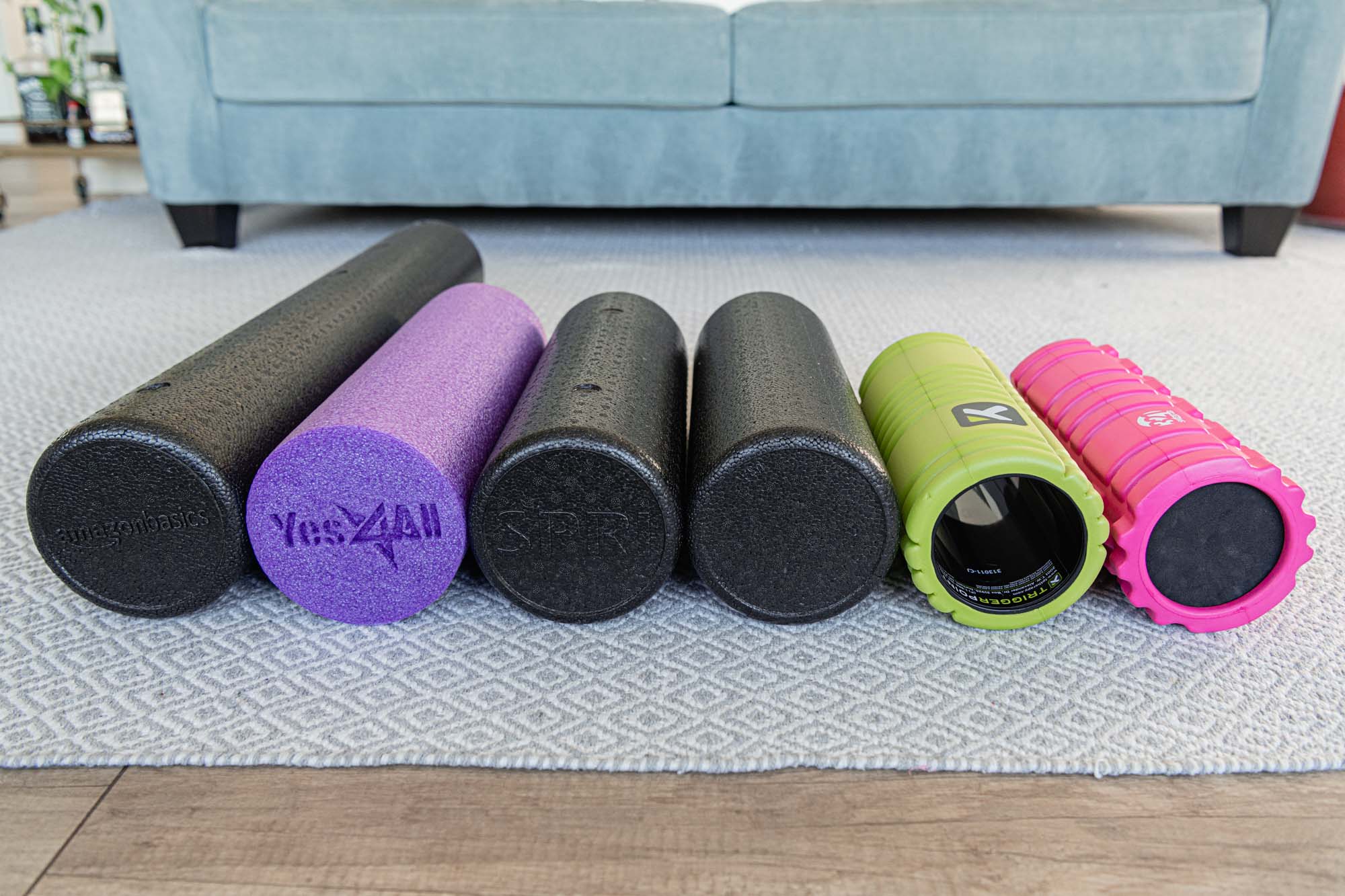
A great foam roller can last a decade or more. With so many options on the market, how do you choose the right one? To get the most out of your purchase, here are some key features to consider.
Materials: The material used for foam rollers is the most important factor in foam roller performance. Harder materials increase the pressure put on the muscles. The greater the pressure, the greater the pain. Ranging from soft to hard, there are three main types of materials used for foam rollers:
- Polyethelene (PE) is the softest. This material yields less pain and pressure while still being effective. However, it is known to not withstand the test of time very well. In our test, the AmazonBasics and Yes4All were advertised as PE. The Amazon Basics roller appeared to be actually be EPP, a firmer material.
- Ethylene Vinyl Acetate (EVA) is lightweight, long lasting and spongy. It’s in the middle of the firmness range. The 321 STRONG and TriggerPoint rollers are EVA.
- Expanded Polypropylene (EPP) is lightweight and has a relatively smooth surface that looks like small balls packed tightly together. Short of using a PVC pipe, this is the firmest foam roller material on the market. The SPRI and j/fit fall into this category. In fact, the Amazon Basics, SPRI, and j/fit were nearly identical.
General-purpose vs. specialized designs: General rolling for the entire body promotes flexibility and recovery all over. While some people may be experiencing pain or tightness in one particular area and wish to purchase a specialized roller, a specialized roller won’t be able to perform as well on other areas.
Texture: Some models have grids or bumps on the surface for extra targeting of sore spots. These grids are specifically designed to dig into the fascia. In our test group, the 321 Strong and Trigger Point both had grid patterns. Smooth rollers, on the other hand, may produce a lighter massage.
Size: The most common foam roller sizes are 12, 18, 24, and 36 inches. Smaller rollers work well for the shoulder area. Larger rollers are ideal for the legs. When it comes to general use, we found that a happy medium of 18 inches performed best.
Some people do like to take their foam rollers everywhere they go, and if you have a clinic or a gym, storage is something to consider. With that in mind, our largest contender, the Amazon Basics at 36 inches, was a bit too large for travel. The 321 Strong and TriggerPoint were the most transportable, and could fit into a full size backpack or be easily carried under the arm.
How we tested
In order to test out our rollers, we got busy foam rolling for two weeks straight. We took each roller and rolled them for equal amounts of time on our upper back, thighs, calves and quadriceps.
We rated (on a scale from 1-5) how painful each roller was, 1 being no pain at all and 5 being unbearably painful. This scale helped us determine if each roller’s effect was consistent with the kind of material used. Before testing, we predicted that the PE roller would score the lowest on the pain scale, the EVA rollers would score somewhere in the middle and the EPP rollers would score the highest.
After testing, we found that the PE roller did score lower on the pain scale thanks to its lighter material. However, all five of the EVA and EPP rollers scored in the same range at about a 3 for medium pain.
We also tested the functionality of the rollers and found that the smoother the surface, the easier they are to use. While the grids may dig deeper into the muscles, we occasionally had to adjust them as we rolled, making the experience more awkward.
Using our pain scale, taking note of the craftsmanship and our impression of the overall experience rolling with each roller, we picked our winners.
Best overall: SPRI – High Density Roller
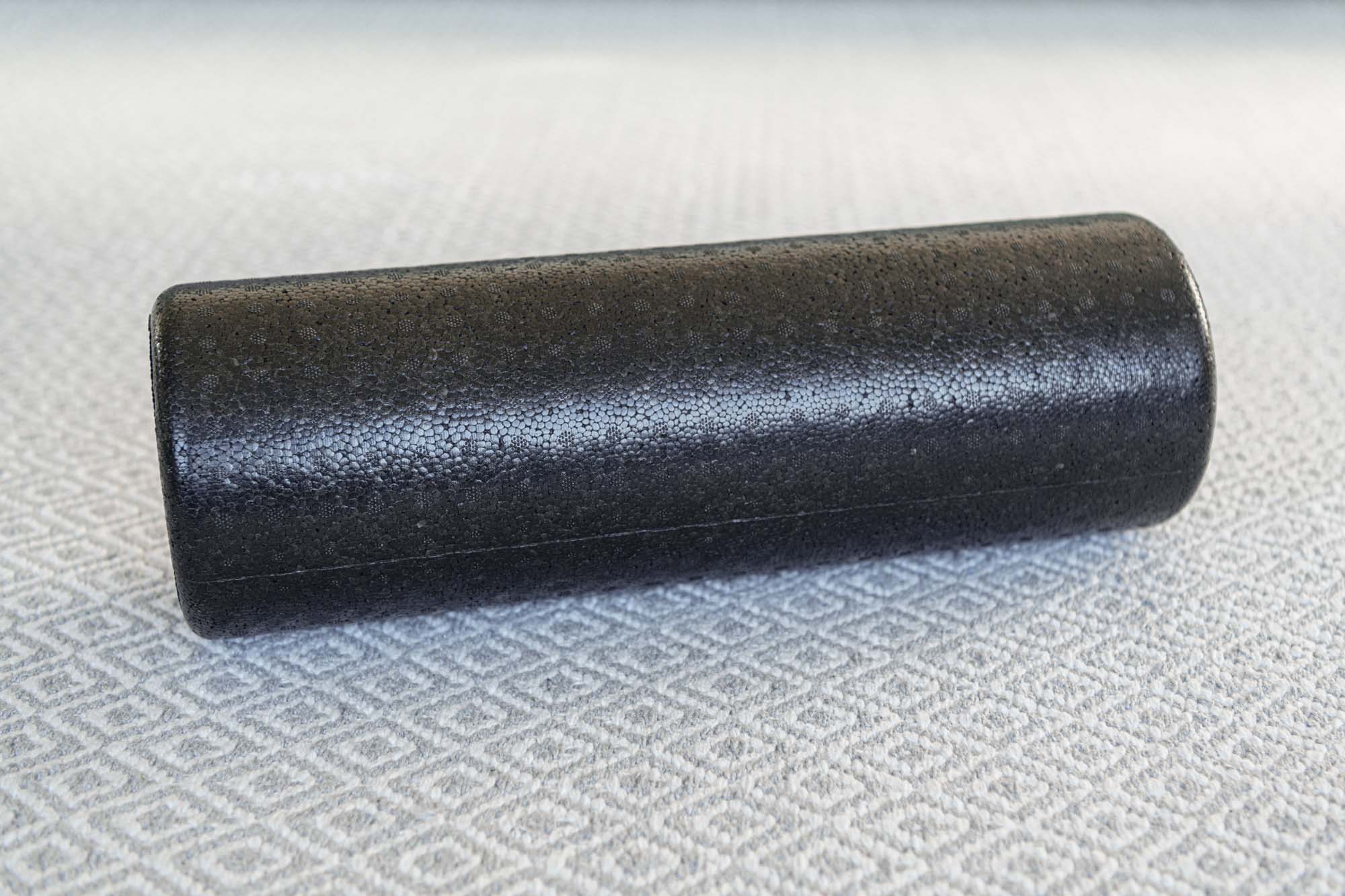
The SPRI – High Density Roller is our pick for the best foam roller overall. While many EPP rollers are nearly identical, we particularly liked this one. On the pain scale of 1-5, it averaged a 3 — not too painful, yet still very effective. It looked to be well-made and showed no signs of wear after two weeks of testing.
While this roller doesn’t have grids to target muscles, we didn’t think that this made the SPRI less effective. In fact, we found that easily rolling across the floor was more important and gave this design an edge.
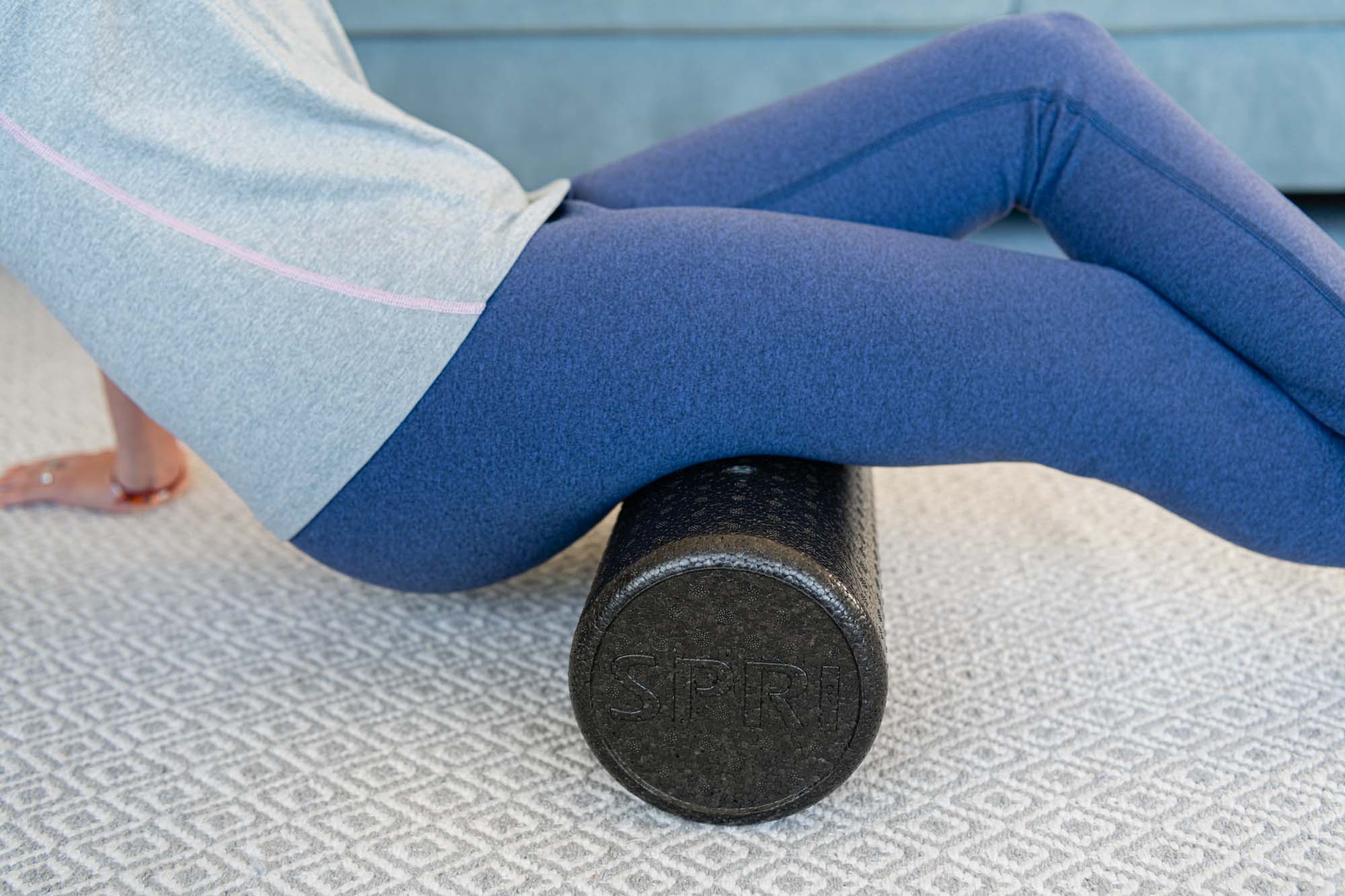
At 18 inches, the SPRI lifts the body at a comfortable height and is long enough to cover any area of your body that needs rolling. And, at just below $20, it is still very affordable.
Also, even though this did not contribute to the SPRI’s effectiveness, we liked that this roller came an exercise guide.
Key takeaways:
- The SPRI foam roller is made of EPP, a high density firm material that is long-lasting.
- The company provides an exercise guide leaflet with the package as well as a downloadable guide.
- At 18 inches, the SPRI won’t fit in a backpack, but weighs only 9.9 lbs for easy carrying.
Runner-up: TriggerPoint – GRID
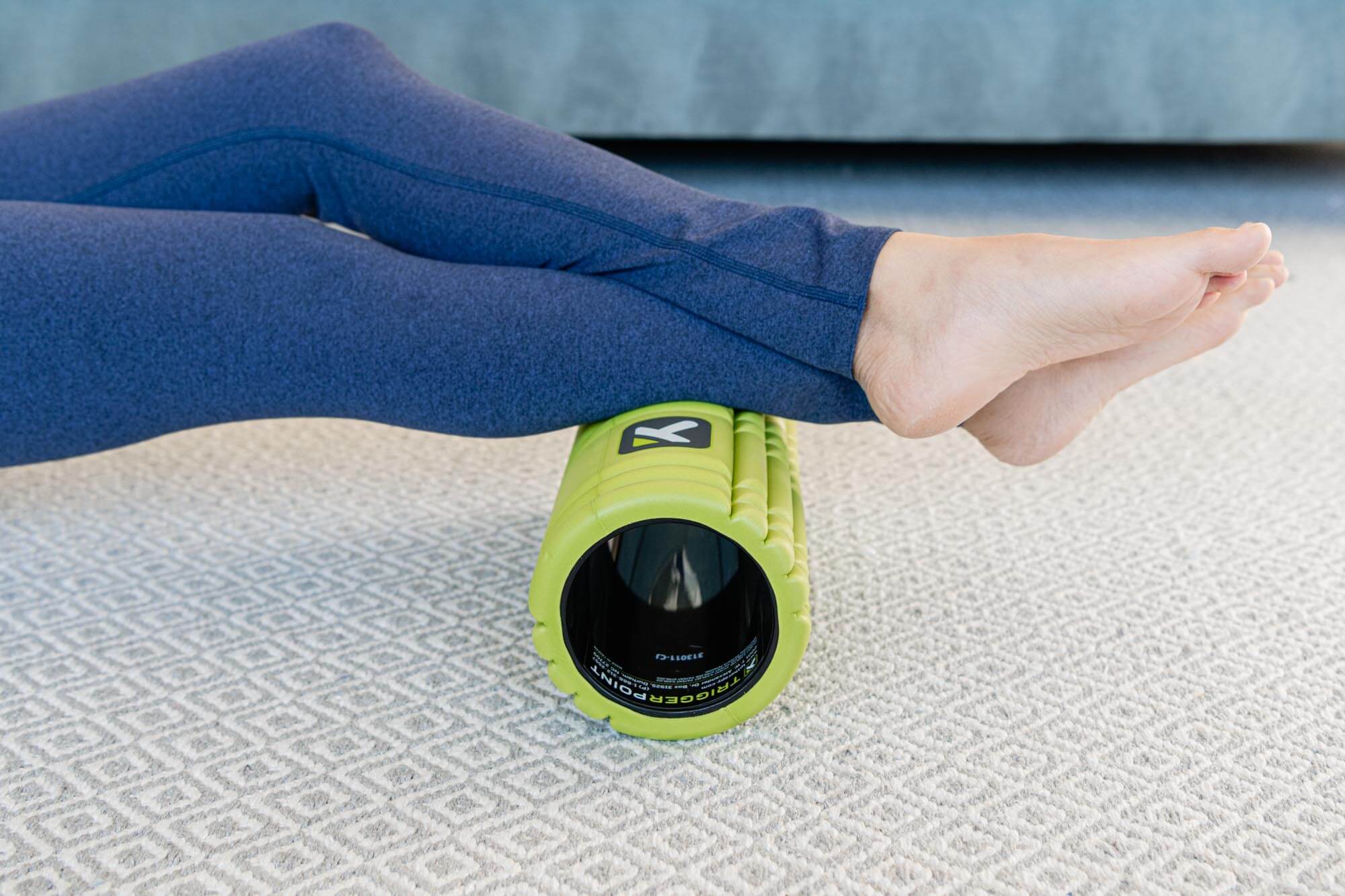
Our runner-up, the TriggerPoint – GRID Foam Roller, comes from a highly respected brand in the world of foam rolling. We liked it for a few reasons: For starters, it’s quite attractive. Available in a multitude of colors (ours was green), it makes you want to pick it up and use it.
The TriggerPoint GRID also averaged a 3 on the pain scale when we tested it. We liked the design of the hollow core that made it lightweight and easy to store. While we also like that the grid design can target pain points, we didn’t prefer this to smooth-surfaced EPP designs.
TriggerPoint is an EVA medium-density foam roller, making it perfect for someone who is perhaps a little more sensitive to pressure. Its smaller size at 13” also makes it great to take with you wherever you go and, while the TriggerPoint GRID is the most expensive roller of our top picks, it still makes for a great investment.
Key takeaways:
- Made of EVA, the TriggerPoint roller is a medium-density roller built from high quality materials.
- This roller has a hard, hollow core, making it both durable and lightweight.
- The grid design allows for deeper massage.
Other finalists we tested
AmazonBasics – High Density Roller
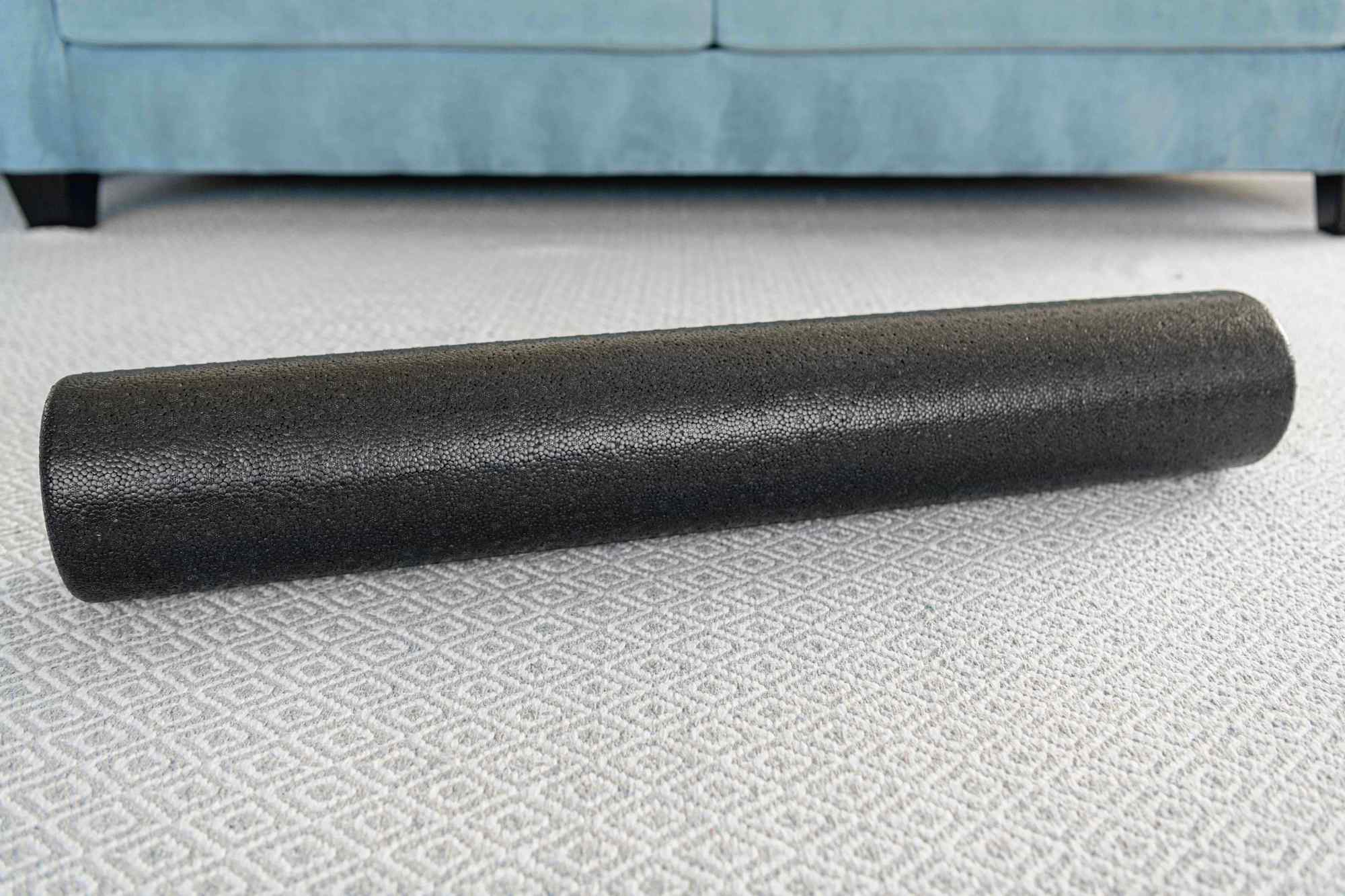
The AmazonBasics – High Density Roller was a top contender. While the one we tested was just too bulky at 36 inches, the 18 inch version sells at around $15, which is actually cheaper than the SPRI.
This foam roller might be great for a larger individual. It is ideal for balance, strengthening, flexibility, and rehab exercises.
j/fit – High Density Roller
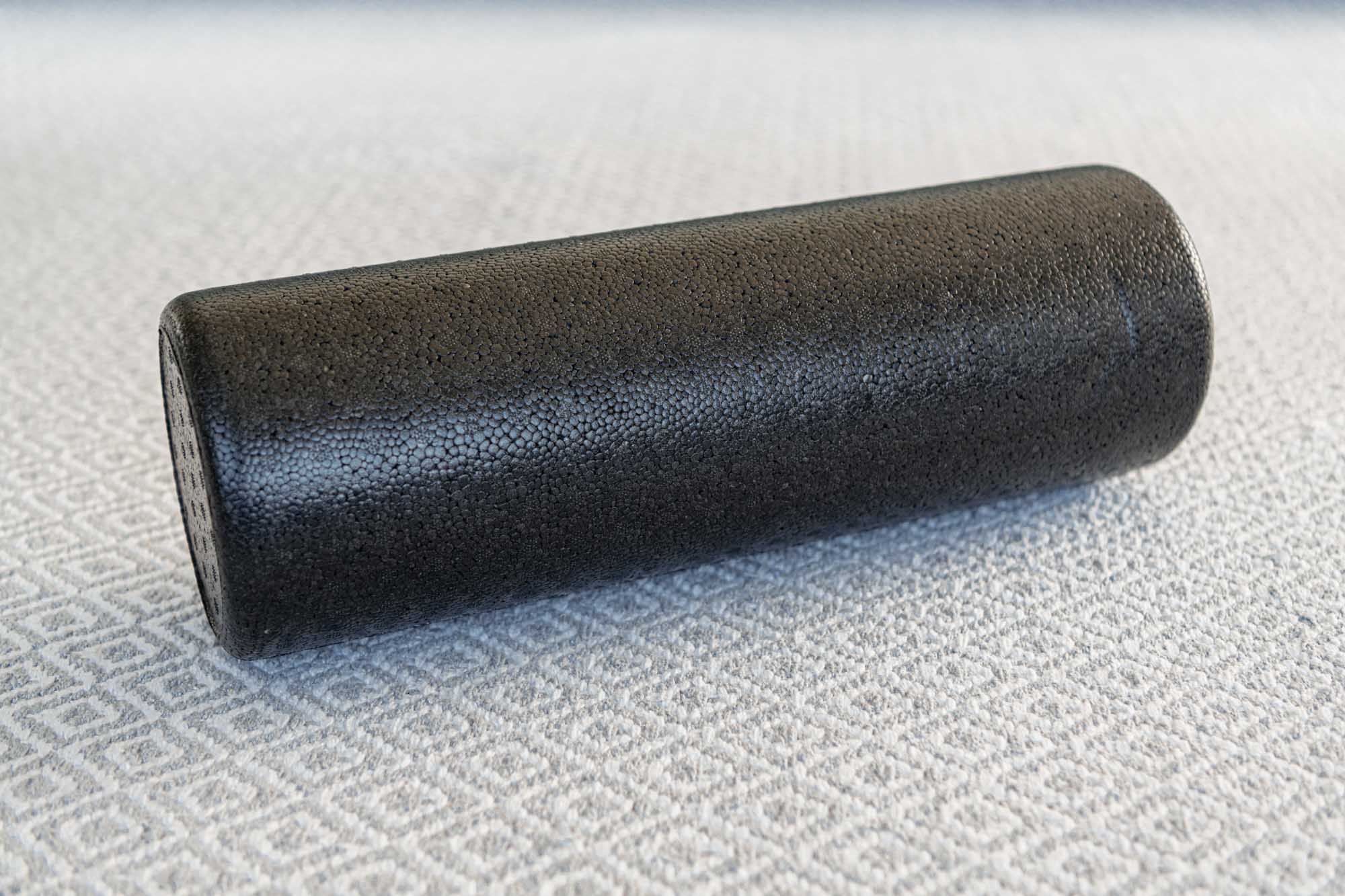
Like the AmazonBasics and the SPRI, the j/fit – High Density Roller is durable and versatile. It had a slightly different texture and did not appear to be as well-made as the other high density rollers, but that doesn’t mean it won’t still get the job done.
The j/fit is another affordable option for someone looking for a firm roller to help them manage aches and pains.
Yes4All – PE Foam Roller
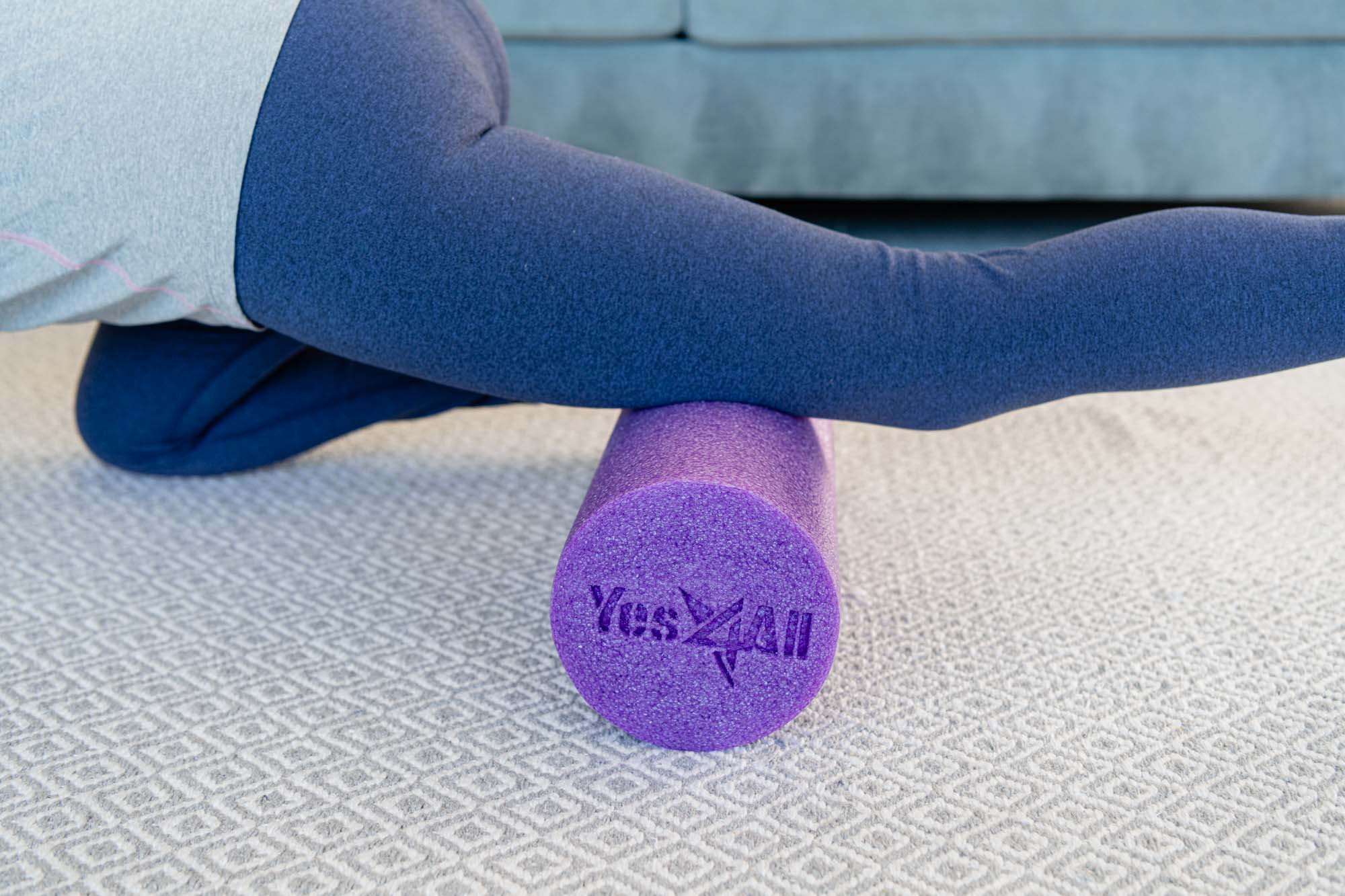
The Yes4All – PE Foam Roller was our gentlest contestant. PE rollers are known to break down at a faster rate simply due to being made from a lighter, less durable material, but the Yes4All claims to be 30% heavier and firmer than other rollers of the same type. It never slipped during use and we think it did a great job.
The Yes4All is perfect for someone who is a beginner at foam rolling. It may not last as long as an EVA or an EPP type roller, but at less than $15 it is still a great investment.
321 STRONG – Medium Density Massager
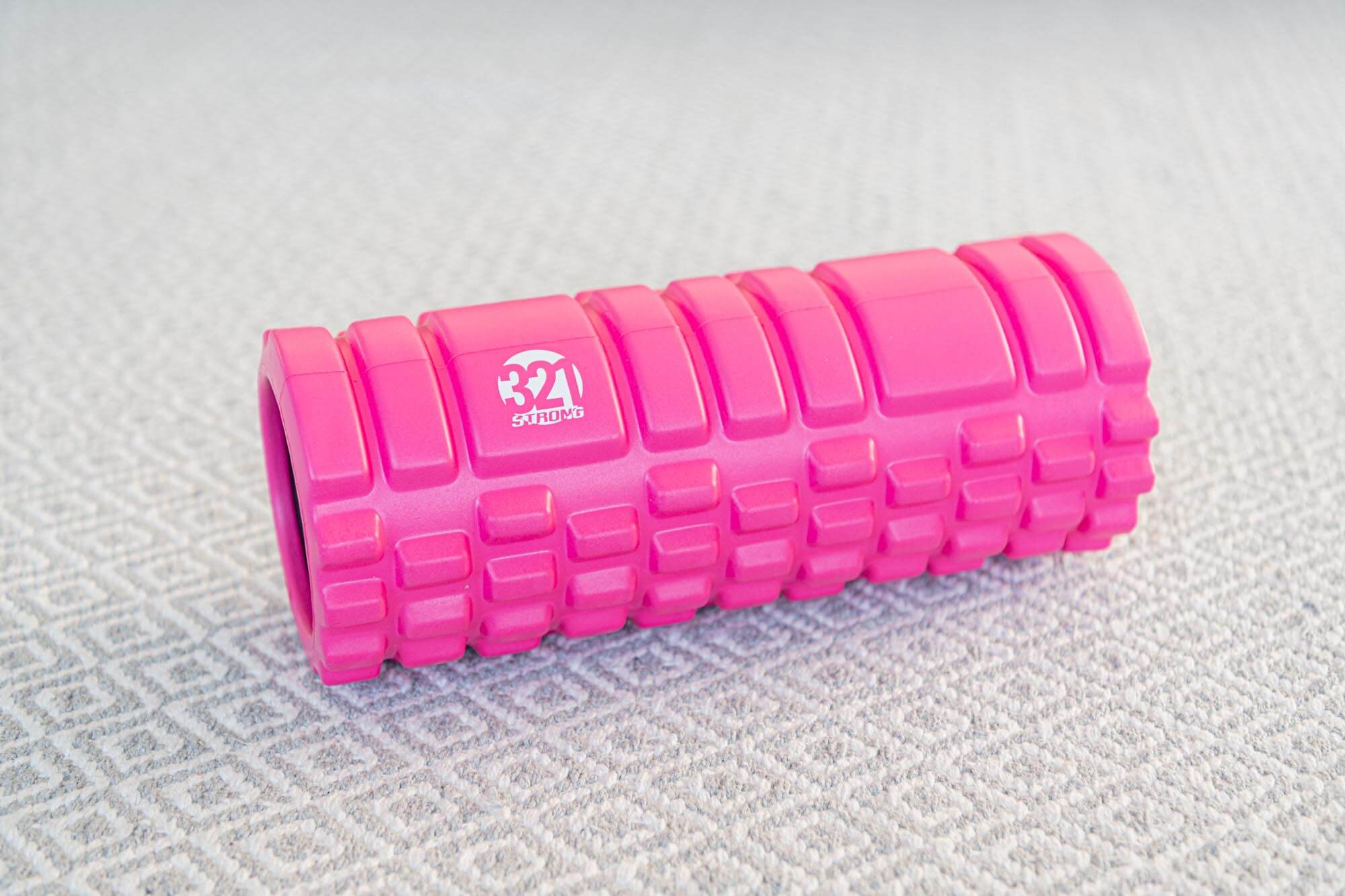
The 321 STRONG – Medium Density Massager is available in many bright colors for those who are looking for something just a tad more fun than a gray cylinder. It is the most compact of the rollers we tested, but we did notice that the outer material pulled away slightly from the core once we handled it.
The grids are a nice feature and are meant to feel like the fingers of a massage therapist, but we noticed that on this roller in particular, the grids made rolling more difficult because of the uneven surface.
That being said, the grids of this roller allow the user to choose, by where they place their body on it, if they want a smoother or a more massage-centric roll. In that sense, the 321 Strong roller is a good choice for someone looking for the best of both worlds between a smooth roller or a gridded roller.
The bottom line
Foam rolling is a great practice to pick up, regardless of how much of an athlete you are. It gives you many of the benefits that come with getting a massage, such as decreased muscle and joint pain, better flexibility and range of motion, and it helps prevent injuries.
Ultimately, most foam rollers on the market function very similarly, but if you’re looking for a foam roller that works well for general use and is long-lasting and affordable, then the SPRI – High Density Roller is an excellent choice.
The TriggerPoint – GRID Foam Roller is another excellent choice, especially for someone who likes a smaller roller with the added benefit of grids that dig into muscles for a deeper massage.
More Reviews
Bauerfeind
Lululemon - Energy
Feetures - Elite Max Cushion
Patagonia - Strider Pro
ZFOsports
HeathYoga - Eco Friendly Non Slip
PureWave - CM7
KIND - Bar
Thermophore - MaxHEAT
No Cry Cordless
The Best Filtered Water Bottles
Brita - BB10
The Best Essential Oil Diffusers
Smiley Daisy - Hibiscus

